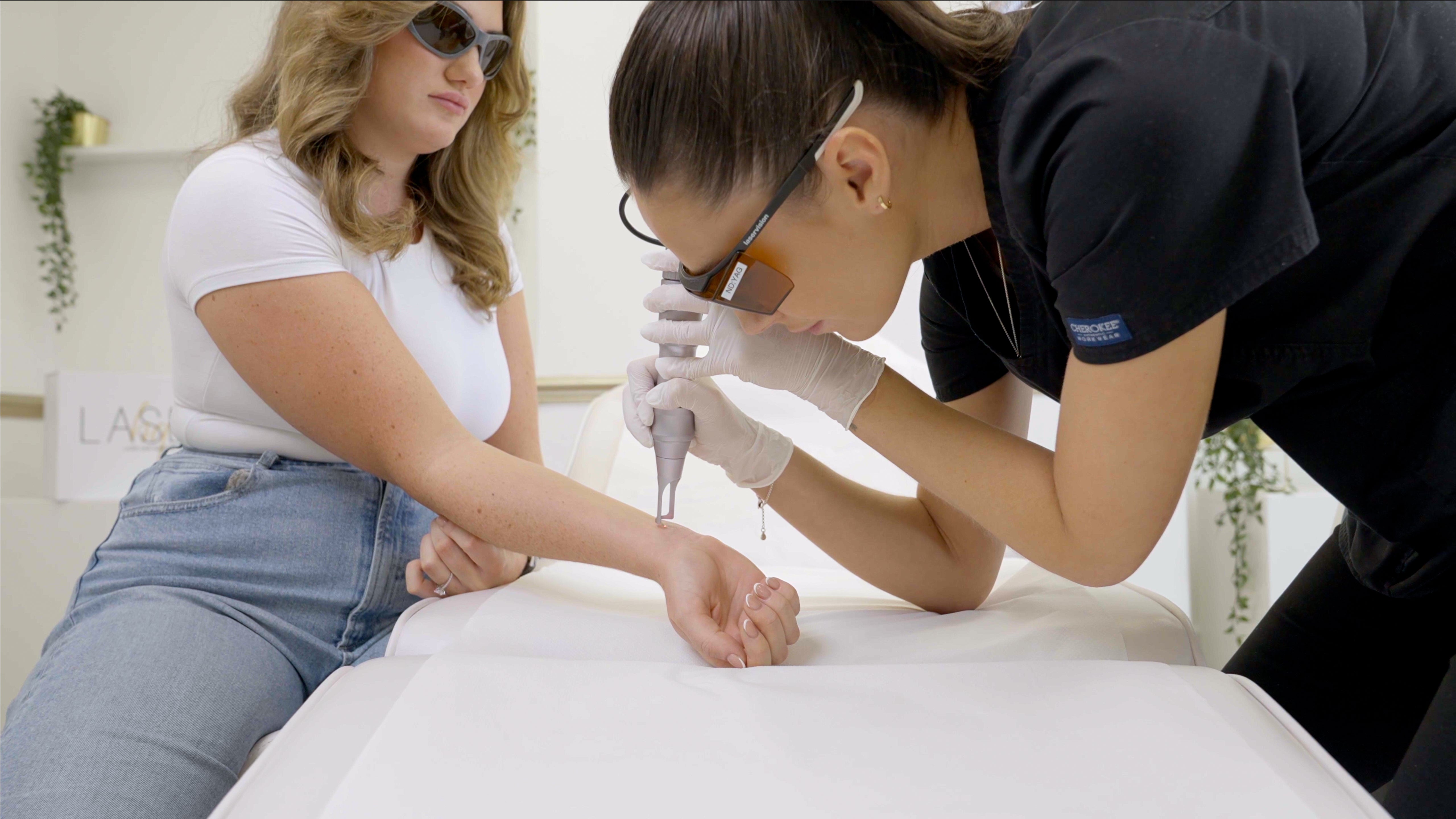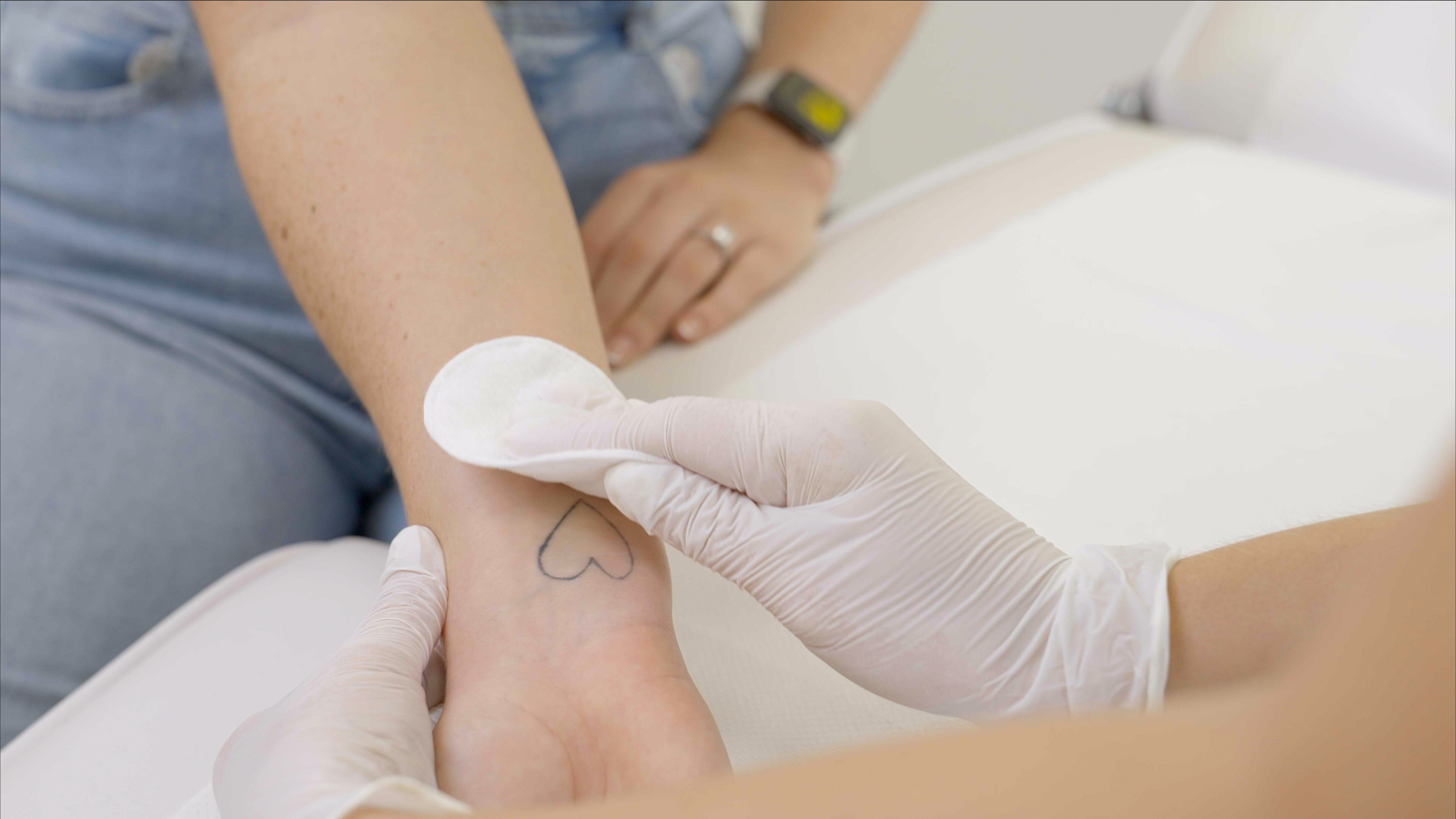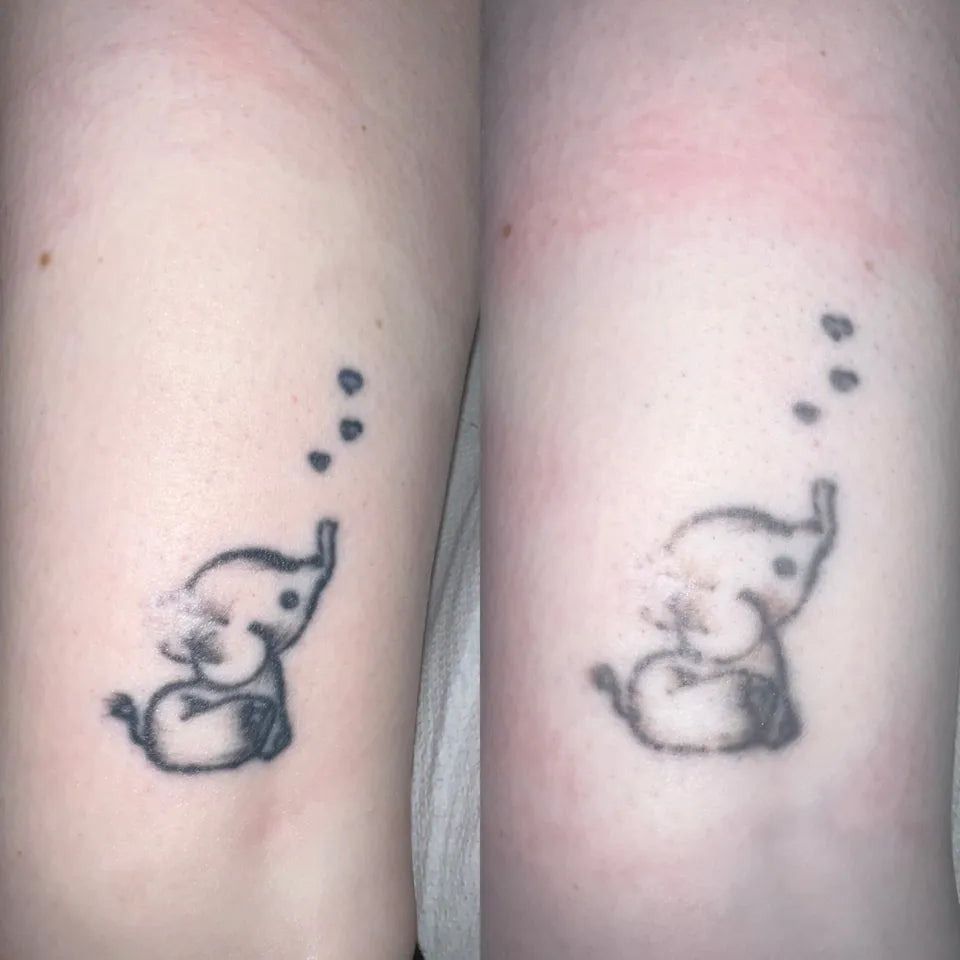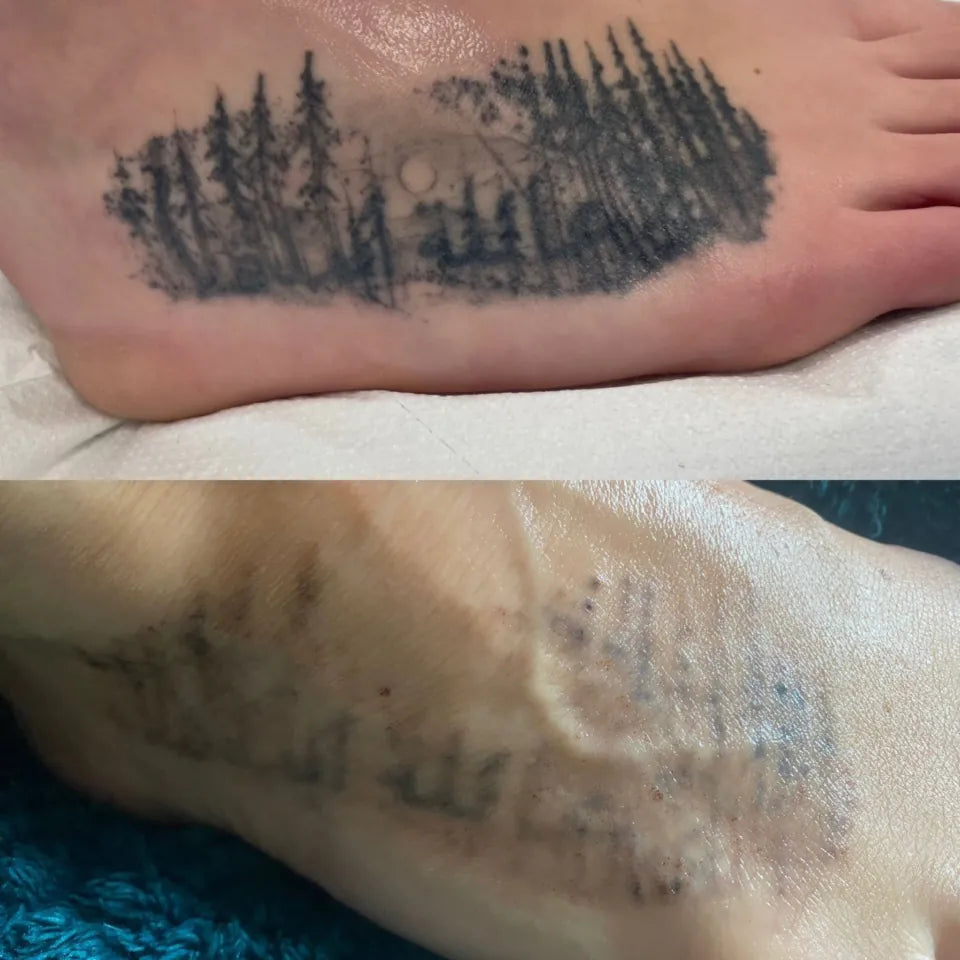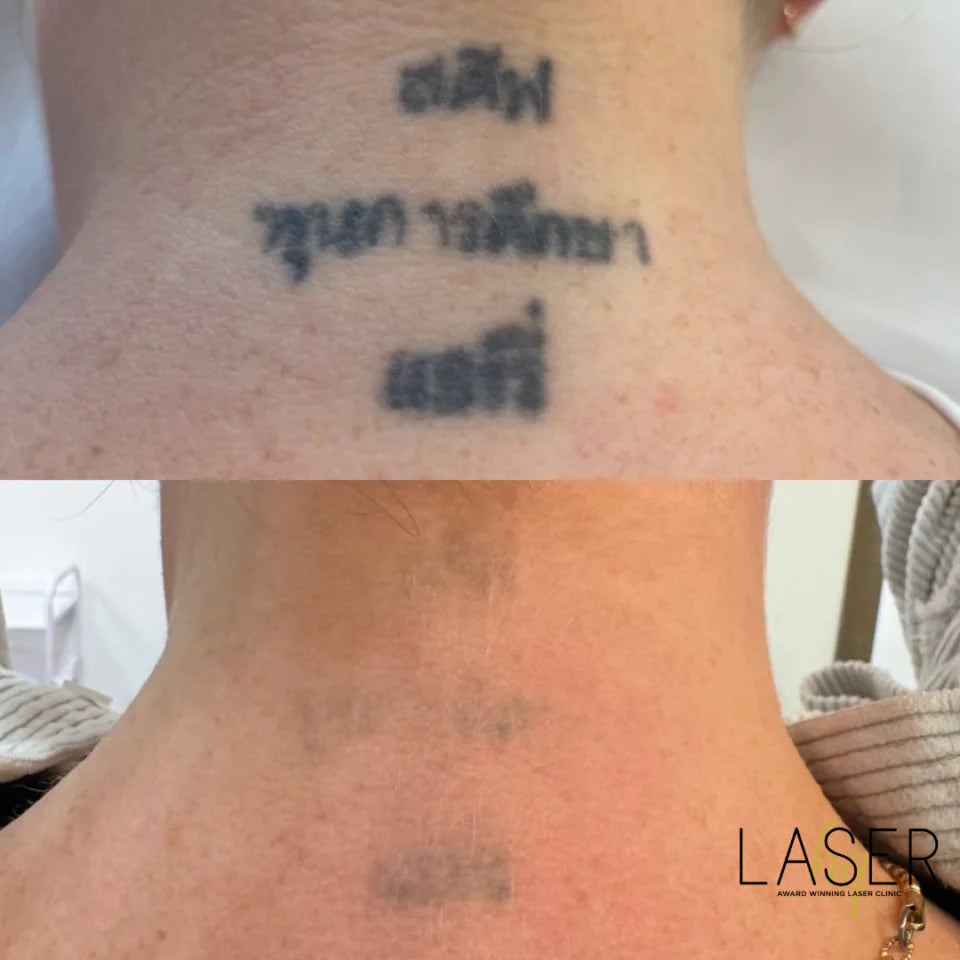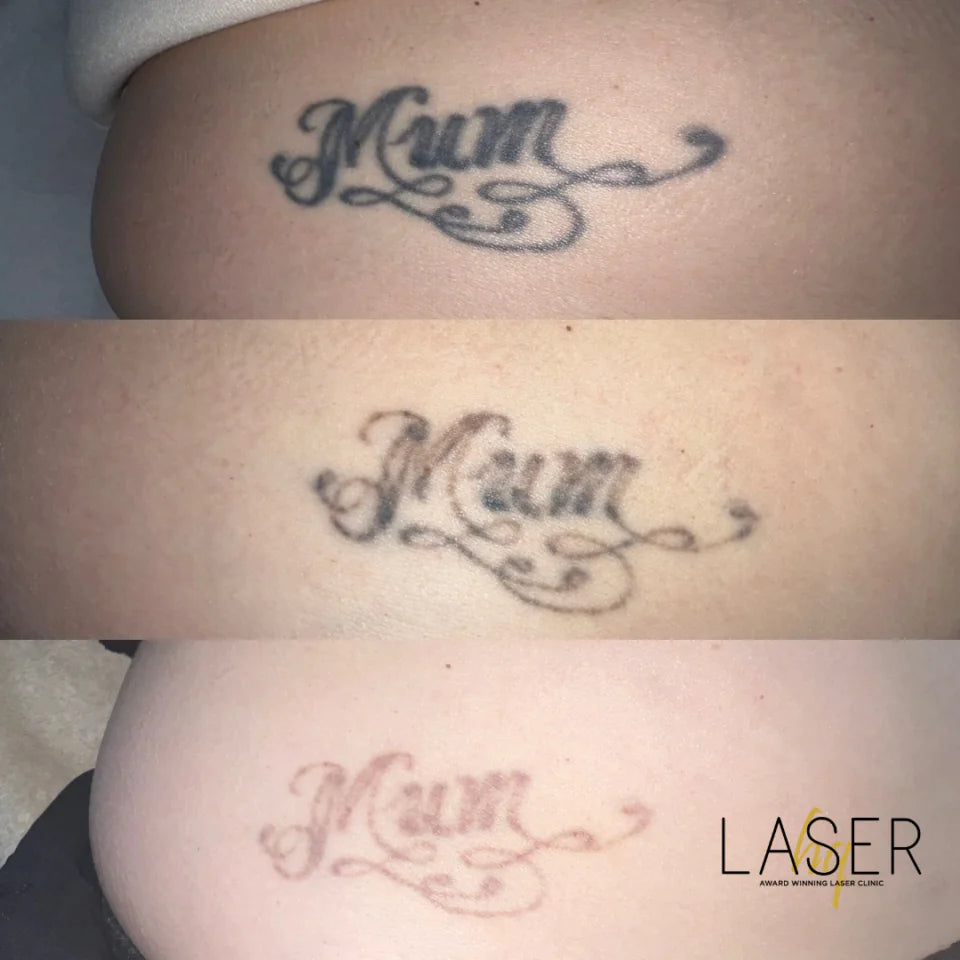Each laser treatment will remove a different layer of ink in the skin, which is why multiple sessions are needed to gradually remove the tattoo. The number of treatments will depend on various factors such as the age, size, colour and location. It will also depend on the depth and type of ink pigment used.Most tattoos can be considerably diminished and many can be completely removed. As a guide amateur tattoos can take between 1-6 sessions and professional tattoos can take up to 6-15 sessions.
We need to allow your skin to heal after each tattoo session fully. The earliest we can bring you in is every 6 weeks to begin with and then 10-12 weeks depending on how faded your tattoo is.
A consultation and patch test is required first which will allow us to assess your tattoo and test your skin’s sensitivity to the Q10 laser. A bespoke treatment plan will be created and the treatment process and all of our pre and post care guidelines will be fully explained to you.Laser tattoo removal typically involves some level of pain. Most people compare the sensation to like having a warm rubber band being flicked against the skin. We will ensure that the treatment is carried out as comfortably as possible. The Q10 incorporates PTP mode ensuring maximum comfort and fast skin regeneration. We use skin numbing such as EMLA cream to reduce pain and we also use a specialist laser cooling system before and during the treatment, which can be controlled and adjusted accordingly. Our medical graded laser machines offer 4 different wavelengths to allow treatment of a wide range of colours and incorporates PTP mode, which ensures maximum comfort throughout each treatment and fast skin regeneration.
Whilst pregnant or breastfeeding, we would recommend that it is best to wait post pregnancy before any treatments are undertaken.
Side effects can be expected after treatment, but these are temporary. There is an immediate whitening of the area treated, which may last for several minutes to several hours. Short term effects can include reddening, bruising and/or blistering. Your laser technician will provide you with pre and post care instructions prior to treatment.
While most tattoos can be fully removed, some pigments, especially those with heavy shading or unique colours, may take longer or fade to a certain degree. Our expert team will give you a clear expectation based on your tattoo’s characteristics.
The treatment does involve some level of discomfort. Most people describe the sensation as similar to having a warm rubber band flicked at them. We do recommend using numbing cream before the treatment, which can be purchased at the clinic after your consultation. We also use a specialist cooling machine, with a temperature of up to -40 degrees, which delivers cool air to the skin, making the treatment more comfortable and can be adjusted accordingly during the treatment.
As a general rule, the closer the tattoo is to your heart, the more effectively it can be removed. This has to do with your circulation. Tattoos on the chest, upper back, neck, arms and face typically take fewer treatments to remove. Lower leg, hands and feet tattoos on average tend to take more treatments to fully remove.
We recommend waiting around 3 months until your tattoo has completely healed before you start your removal sessions.
To make your treatment more comfortable, we highly recommend using EMLA numbing cream at least 40 minutes before your appointment. Avoid wearing products such as moisturisers and fake tan in the treatment area. Drink plenty of water to stay hydrated and make sure that you eat prior to your treatment. Avoid caffeine and alcohol for at least 24 hours before your appointment, as this can increase bleeding during the session. If there is hair in the area, please shave before (this does not include eyebrows) No sun exposure 4 weeks before and after treatments.


